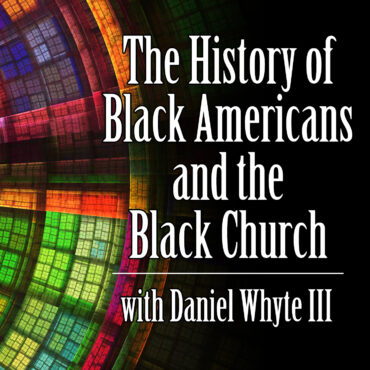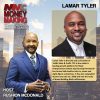
The Religion of the Slaves: the Break With the African Background
The History of Black Americans and the Black Church Welcome to episode #1 of the The History of Black Americans and the Black Church podcast. My name is Daniel […]
Thursday, December 18 podcast
 play_arrow
play_arrow
 play_arrow
play_arrow
 play_arrow
play_arrow
 play_arrow
play_arrow
 play_arrow
play_arrow
EPISODE 123 | WORKOUT WOES & DISRESPECTFUL FAMILY DECISIONS podcast
GMA3: Wednesday, December 17 podcast
 play_arrow
play_arrow
Episode 273 | I Went To South Korea For The Weekend… podcast
 play_arrow
play_arrow
 play_arrow
play_arrow

Our Scripture verse for today is Genesis 41:41-43 which reads: “And Pharaoh said unto Joseph, See, I have set thee over all the land of Egypt. And Pharaoh took off his ring from his hand, and put it upon Joseph’s hand, and arrayed him in vestures of fine linen, and put a gold chain about his neck; And he made him to ride in the second chariot which he had; and they cried before him, Bow the knee: and he made him ruler over all the land of Egypt.”
Our BA and BC quote for today is from Jamaican political and civil leader Marcus Garvey. He said, “We profess to live in the atmosphere of Christianity, yet our acts are as barbarous as if we never knew Christ. He taught us to love, yet we hate; to forgive, yet we revenge; to be merciful, yet we condemn and punish, and still we are Christians…. To be a true Christian one must be like Christ and practice Christianity.”
In this podcast, we will be using as our texts From Slavery to Freedom, by John Hope Franklin, The Negro Church in America/The Black Church Since Frazier by E. Franklin Frazier and C. Eric Lincoln and The Black Church In The U.S. by William A. Banks.
Let’s begin with John Hope Franklin’s book, From Slavery to Freedom as he deals with how African servitude moved toward becoming African slavery in colonial America:
As time went on Virginia fell behind in satisfying the labor needs of the colony with Indians and indentured servants. It was then that the colonists began to give serious thought to the “perpetual servitude” of blacks. Virginians began to see what neighboring islands in the Caribbean had already recognized, namely, that blacks could not easily escape without being identified; that they could be disciplined, even punished, with impunity since they were not Christians; and that the supply was apparently inexhaustible. Black labor was precisely what Virginia needed in order to speed up the clearing of the forests and the cultivation of larger and better tobacco crops. All that was required was legislative approval of a practice in which many Virginians were already engaged. Indeed, by 1640, some Africans in Virginia had become bond servants for life. The distinction between black and white servants was becoming well established. In that year, when three runaway servants, two white and one black, were recaptured, the court ordered the white servants to serve their master one additional year. The black servant, however, was ordered “to serve his said master or his assigns for the time of his natural life here or elsewhere.” Thus, within the first generation of Virginia’s existence, African servitude was well on the way to becoming African slavery.
Now, our main topic for today is titled, “The Religion of the Slaves: The Loss of Social Cohesion”. Frazier writes:
It is evident that the manner in which Negroes were captured and enslaved and inducted into the plantation regime tended to loosen all social bonds among them and to destroy the traditional basis of social cohesion. In addition, the organization of labor and the system of social control and discipline on the plantation both tended to prevent the development of social cohesion either on the basis of whatever remnants of African culture might have survived or on the basis of the Negroes’ role in the plantation economy. Although the Negroes were organized in work gangs, labor lost its traditional African meaning as a cooperative undertaking with communal significance. In fact, there was hardly a community among the slaves despite the fact that on the larger plantations there were slave quarters. These slave quarters were always under the surveillance of the overseer. On the smaller plantations which included, as we have seen, the majority of the plantations, the association between master and slave became the basis of a new type of social cohesion.
Let us consider next a factor of equal if not greater importance in the plantation regime that tended to destroy all social cohesion among the slaves. I refer to the mobility of the slave population which resulted from the fact that the plantation in the Southern States was a commercial form of agriculture requiring the buying and selling of slaves. There has been much controversy about the slave trade because of its dehumanizing nature. Curiously enough, southern apologists for slavery deny, on the one hand, that there was a domestic slave trade while, on the other hand, they insist that slave traders were despised and were regarded as outcasts in southern society.” There were defenders, however, of the system who frankly acknowledged that slave-trading was indispensable to the slave system. The Charleston Mercury, for example, stated that “Slaves…are as much and as frequently articles of commerce as the sugar and molasses which they produce.” This opinion has been confirmed by the study of the practice during slavery. The slave trade, we may conclude, was one of the important factors that tended toward the atomization and dehumanizing of the slaves.
The possibility of establishing some basis for social cohesion was further reduced because of the difficulty of communication among the slaves. If by chance slaves who spoke the same African language were thrown together, it was the policy on the part of the masters to separate them. In any case it was necessary for the operation of the plantation that the slaves should learn the language of their masters and communication among slaves themselves was generally carried on in English. In recent years a study has revealed that among the relatively isolated Negroes on the Sea Islands along the coast of South Carolina and Georgia, many African words have been preserved in the Negro dialect known as Gullah. But the very social isolation of these Negroes is an indication of the exceptional situation in which some remnants of African languages were preserved in the American environment. It is important to note that, according to the author of this study, the use of African modes of English speech and African speech survivals were used only within the family group. This brings us to the most important aspect of the loss of social cohesion among the Negroes as the result of enslavement.
The enslavement of the Negro not only destroyed the traditional African system of kinship and other forms of organized social life but it made insecure and precarious the most elementary form of social life which tended to sprout anew, so to speak, on American soil—the family. There was, of course, no legal marriage and the relation of the husband and father to his wife and children was a temporary relationship dependent upon the will of the white masters and the exigencies of the plantation regime. Although it was necessary to show some regard for the biological tie between slave mother and her offspring, even this relationship was not always respected by the masters. Nevertheless, under the most favorable conditions of slavery as, for example, among the privileged skilled artisans and the favored house servants, some stability in family relations and a feeling of solidarity among the members of the slave households did develop. This, in fact, represented the maximum social cohesion that was permitted to exist among the transplanted Negroes.
There have been some scholars who have claimed that social cohesion among the slaves was not destroyed to the extent to which it is presented here. For example, DuBois evidently thought that social cohesion among the slaves was not totally destroyed. For in one of his studies of Negro life he makes the assertion that the Negro church was “the only social institution among the Negroes which started in the African forest and survived slavery” and that “under the leadership of the priest and medicine man” the church preserved the remnants of African tribal life.” From the available evidence, including what we know of the manner in which the slaves were Christianized and the character of their churches, it is impossible to establish any continuity between African religious practices and the Negro church in the United States. It is more likely that what occurred in America was similar to what Mercier has pointed out in regard to the Fon of Dahomey. His studies showed that with the breaking up or destruction of the clan and kinship organization, the religious myths and cults lost their significance. In America the destruction of the clan and kinship organization was more devastating and the Negroes were plunged into an alien civilization in which whatever remained of their religious myths and cults had no meaning whatever.

The History of Black Americans and the Black Church Welcome to episode #1 of the The History of Black Americans and the Black Church podcast. My name is Daniel […]

Copyright Blackpodcasting 2025